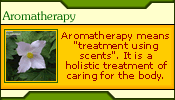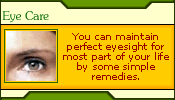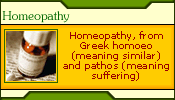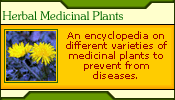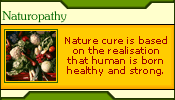|
Known as anti-opathalmic, vitamin A is essential for growth and
vitality. It builds up resistance to respiratory and other infections
and works mainly on the eyes, lungs, stomach and intestines. It
prevents eye diseases and plays a vital role in nourishing the skin
and hair. It helps to prevent premature ageing and senillity, increases
life expectancy and extends youthfulness. The main sources of this
vitamin are fish liver oil, liver, whole milk, curds, pure ghee,
butter, cheese, cream and egg yolk, green leafy and certain yellow
root vegetables such as spinach, lettuce, turnip, beets, carrot,
cabbage and tomato and ripe fruits such as prunes, mangoes,pappaya,
apricots, peaches, almonds and other dry fruits. A prolonged deficinecy
of vitamin A may result in inflammation of the eyes, poor vision
frequent colds, night blindness and increased susceptibility to
infections, lack of appetite and vigour, defective teeth and gums
and skin disorders.
The recommended daily allowance of vitamin A is 5,000 international
units for adults and 2,600 to 4,000 international units for children.
When taken in large therapeutic doses, which are usually 25,000
to 50,000 units a day, it is highly beneficial in the treatment
of head and chest colds, sinus trouble, influenza and other infectious
diseases . It is also valuable in curing night blindness and other
eye diseases as well as many stubborn skin disorders. This vitamin
can be given upto 1,00,000 units a day for a limited period of four
weeks under doctor's supervision.
Vitamin A and carotene can be obtained from either animal or vegetable
sources. The animal form is divided between retinol and dehydroretinol
whereas the vegetable carotene can be split into four very potent
groups - alpha-carotene, beta-carotene, gamma-carotene and crypto-carotene.
With enough beta-carotene available in the body, the body can manufacture
its own vitamin A.
Vitamin A is required for
Vitamin A is required for night vision, and for a healthy skin.
It assists the immune system, and because of its antioxidant properties
is great to protect against pollution and cancer formation and other
diseases. It also assists your sense of taste as well as helping
the digestive and urinary tract and many believe that it helps slow
aging.
It is required for development and maintenance of the epithelial
cells, in the mucus membranes, and your skin, and is important in
the formation of bone and teeth, storage of fat and the synthesis
of protein and glycogen.
Deficiency of vitamin A
A deficiency of vitamin A may lead to eye problems with dryness
of the conjunctiva and cornea, dry skin and hair, night blindness
as well as poor growth. Dry itchy eyes that tire easily are normally
a warning of too little vitamin A. If the deficiency become severe,
the cornea can ulcerate and permanent blindness can follow.
Abscesses forming in the ear, sinusitis, frequent cold and respiratory
infections as well as skin disorders, such as acne, boils and a
bumpy skin, as well as weight loss might be indicative of the vitamin
being in short supply. Insomnia, fatigue and reproductive difficulties
may also be indicative of the vitamin in short supply. Your hair
and scalp can also become dry with a deficiency, especially if protein
is also lacking.
Dosage
The dosage underneath is the Recommended Dietary Allowance (RDA),
but be aware that this dosage is the minimum that you require per
day, to ward off serious deficiency of this particular nutrient.
In the therapeutic use of this nutrient, the dosage is usually increased
considerably, but the toxicity level must be kept in mind.
Male 5,000 IU per day (1,000 µg equivalent), female 4,000
IU per day (800 µg retinol equivalent), although 10,000 IU
per day is normally used in supplementation.
Toxicity and symptoms of high intake
Dosages exceeding 15,000 IU per day must be taken under medical
supervision. Toxicity can appear in some individuals at relatively
low dosages and the symptoms may include nausea, dizziness, menstrual
problems, skin changes and dryness, itchiness, irritability, vomiting,
headaches and long term use can cause hair loss, bone and muscle
pain, headache, liver damage, and an increase in blood lipid concentrations.
Pregnant women must be careful as a high intake of this vitamin
can cause birth defects.
Pro-vitamin A - beta-carotene does not cause toxicity. Be careful
if you in the unlikely event run across polar bear on a menu - 500
gram (about ½ a pound) of polar bear liver will deliver about
9,000,000 IU to your diet - a very lethal dose. Headaches, blurred
vision, loss of hair, drowsiness and diarrhea, enlargement of the
spleen and liver can all be indications when your intake is too
high.
Best used with
Take vitamin A with B group vitamins, vitamins C, D and E, choline,
essential fatty acids together with calcium, phosphorus and zinc
for the best results.
When more may be required
More of this vitamin is required when you consume alcohol, on a
low-fat diet, or a diet high in polyunsaturated fatty acids, if
you smoke or live in a polluted area. It may also be indicated if
you suffer from diabetes or have an under-active thyroid gland.
Be careful of vitamin A in pregnancy.
Enemy of vitamin A
Retinol is destroyed by light, high temperatures as well as when
using copper or iron cooking utensils. Beta-carotene rich vegetables
and fruit must not be soaked in water for long periods, since the
nutrients can be lost like that.
Other interesting points
There seems to be no toxicity when ingesting large amounts of beta-carotene
- you might however have a slightly orange colored skin, as the
carotene gets stored in your skin.
Food sources of vitamin A
Liver, milk, egg-yolk, carrots, dark green leafy vegetables and
yellow fruits are high in vitamin A or beta-carotene.
|







